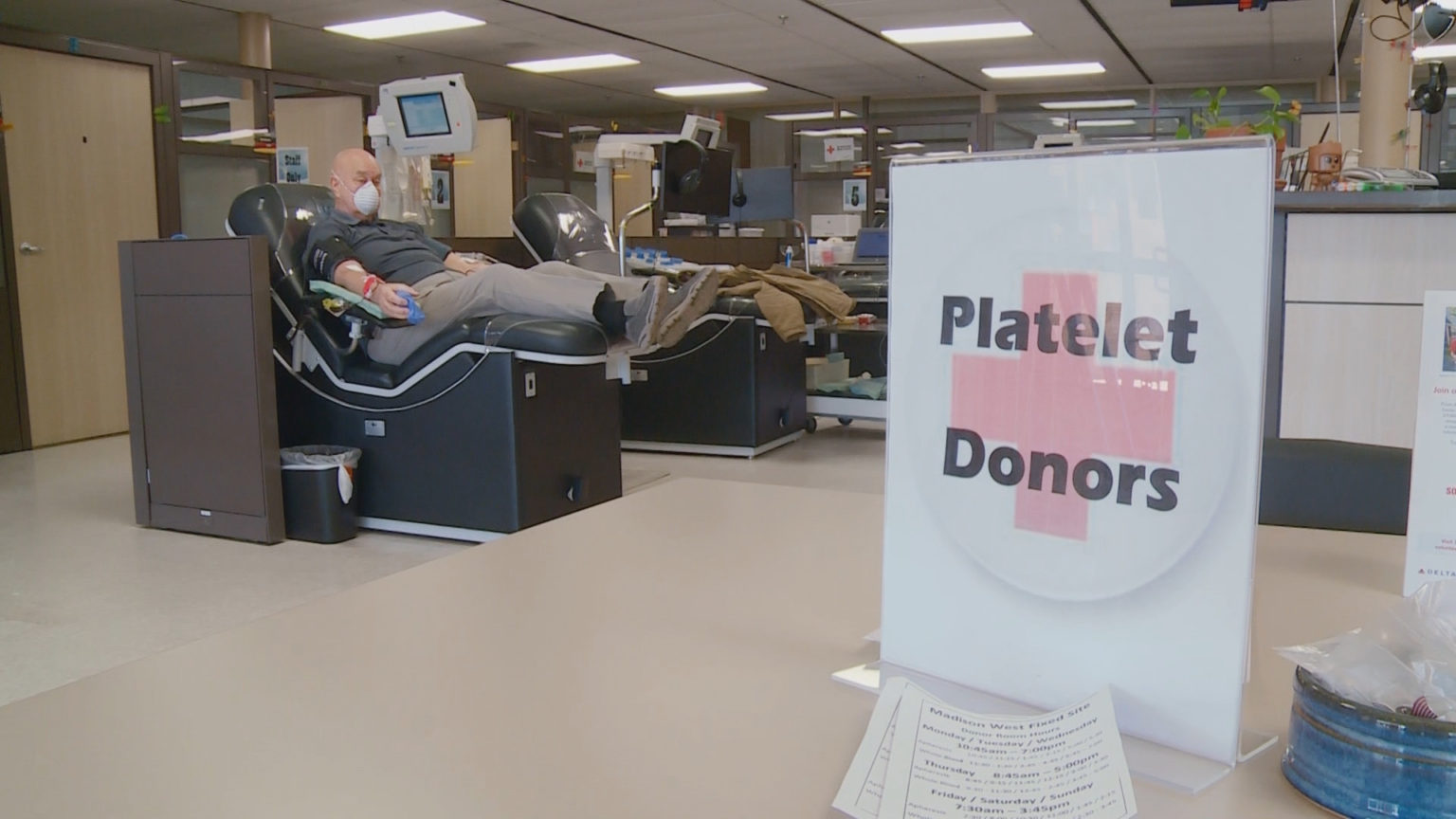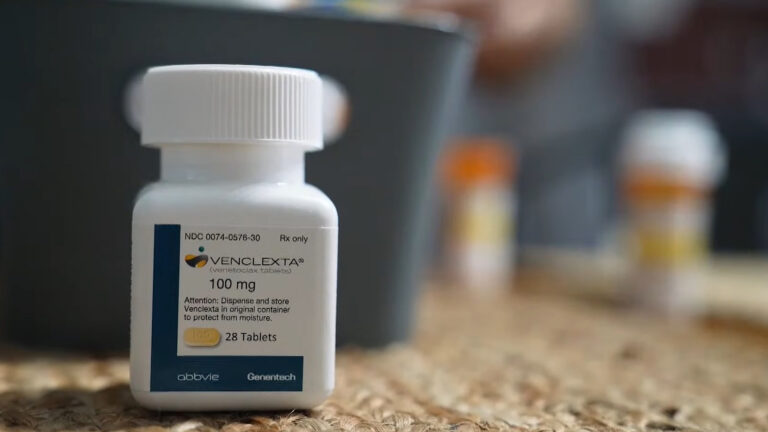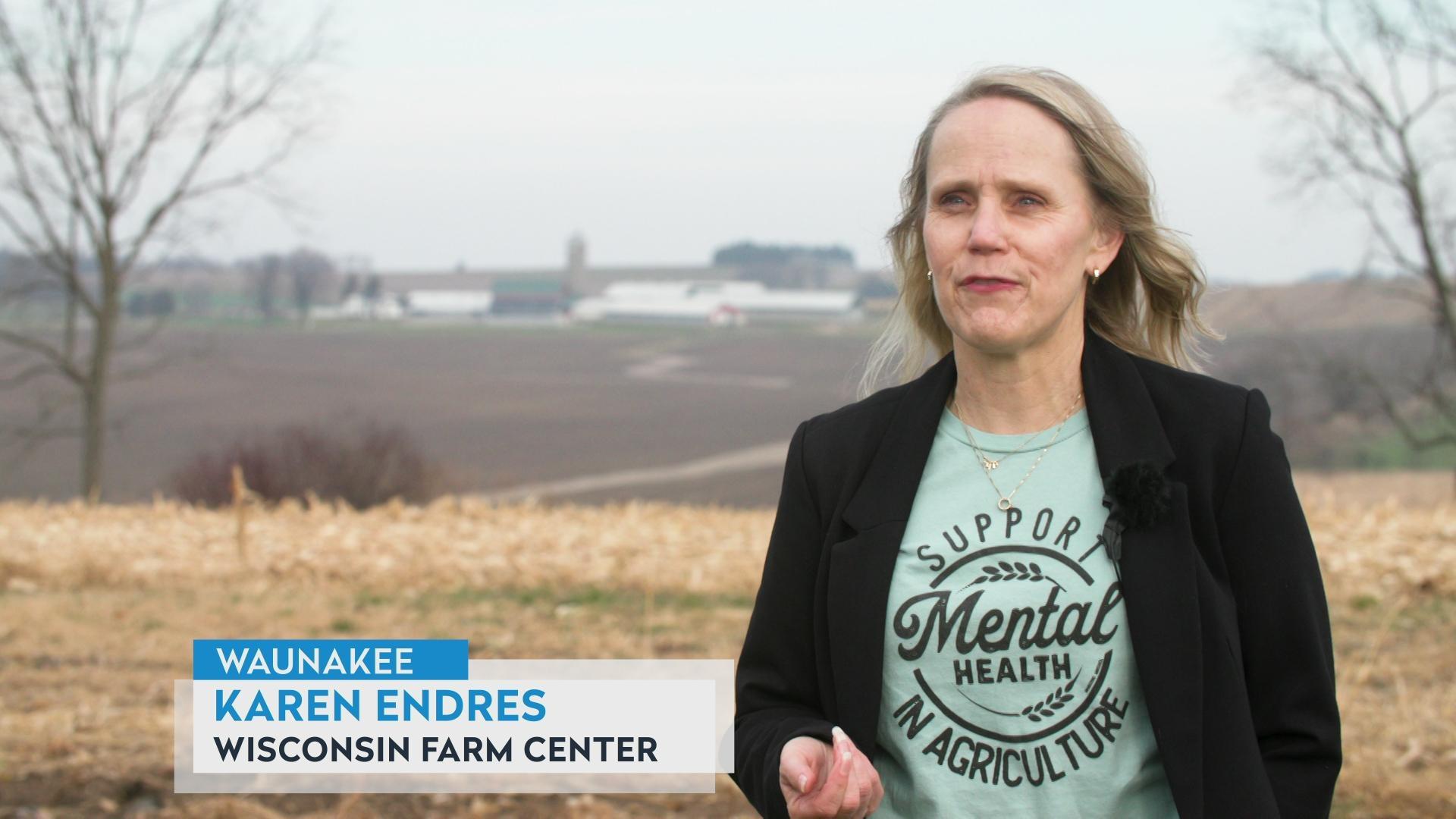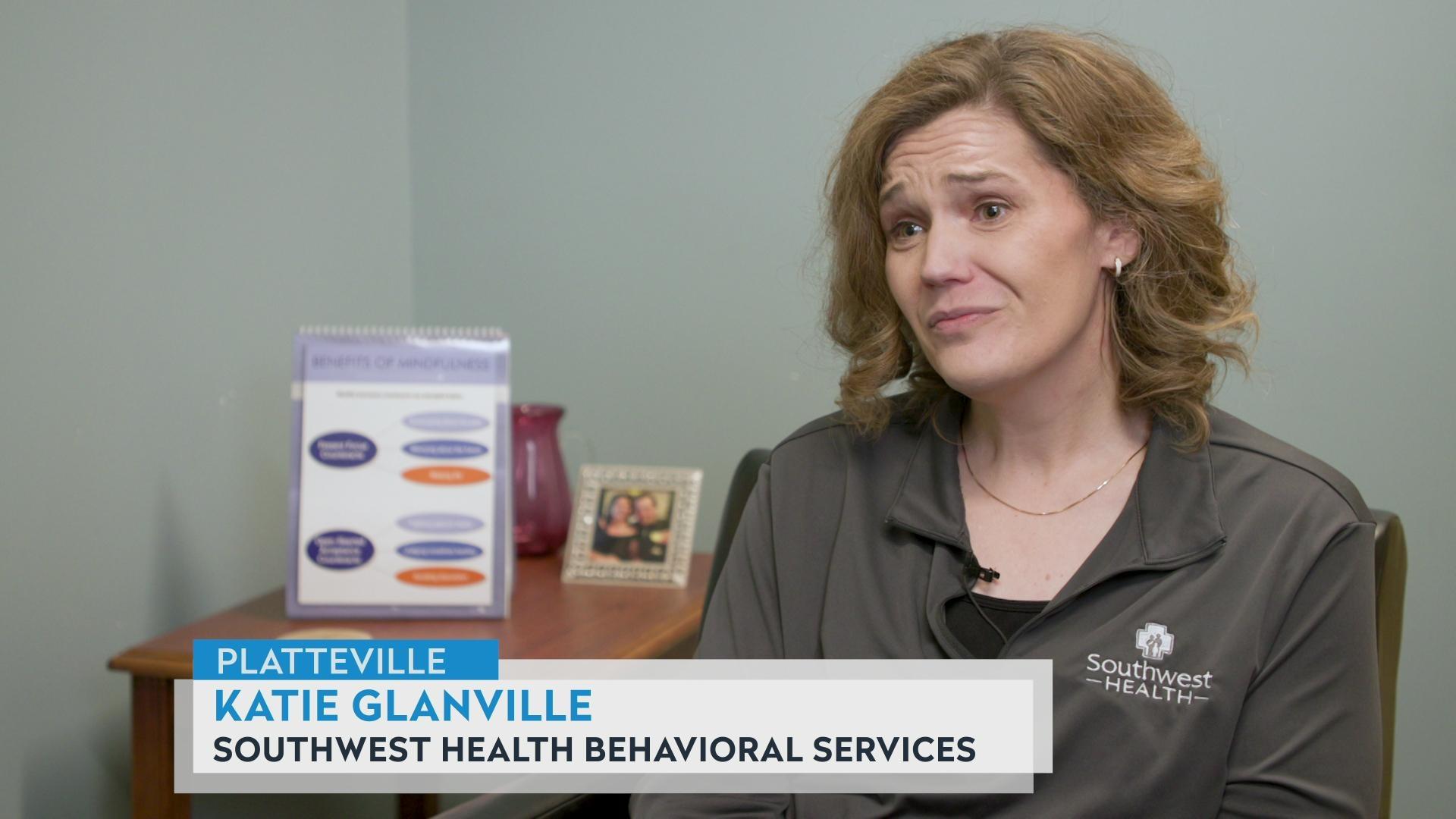Recoverees Help Others by Donating Plasma
Plasma transfusion can be a promising technique for a recovered patient to share antibodies with someone currently suffering from COVID-19.
By Marisa Wojcik | Here & Now
April 16, 2020

Gary Dalgaard of Sun Prairie donates his plasma in the hope that antibodies in his blood could prevent COVID-19 patients from needing to be placed on ventilators.
Gary and Gretchen Dalgaard of Sun Prairie were part of the first few positive cases of the novel coronavirus in Wisconsin. Numbers four and five in Dane County, to be exact.

“We take things a day at a time and worrying about what might happen is just not what we do,” says Sun Prairie native Gary Dalgaard.
Gretchen played cards with a group of female friends on Tuesdays, but an unexpected guest showed up on Tuesday in early March: COVID-19. One of the women who came to play had it, and passed it on to the rest of the group.
A public health nurse called them with their test results and told them to remain calm. But the Dalgaards were not scared when they found out they tested positive, despite the news reports about its potential to be fatal.
“We don’t handle things that way. We take things a day at a time and worrying about what might happen is just not what we do,” Gary said about the couple’s disposition.
The Dalgaards hunkered down in their home to quarantine themselves from the outside world. Their symptoms were mild compared to the critically ill in hospitals around the world. Fatigue, a cough and “the world’s worst runny nose.”
The retired couple kept themselves busy, Gary in his woodshop making fixtures for their daughter’s clothing business and Gretchen sewing cloth masks. But they wanted to do more so Gary started doing research.
“I started hearing little bits here and there about things that they were doing in other parts of the country and I thought it would be really cool if we could turn this into a positive,” Gary said.

Plasma transfusion can be used to share antibodies and alleviate symptoms of those critically ill.
He stumbled upon a national consortium called the Convalescent Plasma Project. The project, spearheaded by Mayo Clinic, is a network of 40 institutions and 800 hospitals across the country that are transfusing the plasma of recovered COVID-19 patients into those currently suffering from the disease.
Convalescent plasma transfusion is a century-old technique and has been used to treat other viruses. After someone has recovered from COVID-19, their plasma contains the antibodies created to fight off the virus and can be used to alleviate symptoms in those who are sick.
Gary wanted in, so he reached out to a friend who works at the University of Wisconsin to see if they did anything like this and came to find out a program was just starting between UW Health and the UW School of Medicine and Public Health.
Gary was given the contact information for Dr. William Hartman, an associate professor of anesthesiology and the local lead investigator. He found Dr. Hartman at just the right time.
“I contacted Dr. Hartman and said that we would be very interested in participating. It turns out we were the first ones because they hadn’t went looking for anyone at the point,” Gary said.
The program was just getting off the ground, as it had only joined the consortium two weeks prior and was doing six-to-eight months worth of work. The group had to create an infrastructure and workflow for large numbers of patients donating plasma and distributing it where it needed to go.
“The fact that we had this group working tirelessly around the clock and we were able to accomplish it in 15 days, from concept to actually transfusing, I truly believe is Herculean,” Dr. Harman said.
Once the plasma full of antibodies is transfused into the patient with COVID-19, physicians document everything that happens with that patient and record it in a massive, nationwide database with the other hospitals in the consortium.
“I am excited that we’re finally going in that direction and we’re doing a meaningful study of it so we can determine if it is effective. Other treatments that have been used for COVID-19 seem to go in and out of vogue right now. People start to use them and then they lose a little bit of steam,” Hartman said.
It is his hope that the sheer breadth of this study will help bring conclusive answers fast.
“I think this will really allow us to come to a conclusion as to whether or not it’s safe and effective,” he said. “And then we can spread worldwide to treat as many people as we can.”
Convalescent plasma transfusion is not a cure, but a treatment. Hartman calls it “an immune boost.” Medical professionals are hoping to discover how well the treatment alleviates the symptoms of infected patients and are starting with those that are most critically ill.
“Can we prevent patients from going on ventilators? Can we prevent patients from going into the ICU?” Hartman posited.

Gary Dalgaard’s plasma has already been used on two patients. He plans to continue donating to help others.
Gary donated his plasma last week and it is already transfused into two patients with COVID-19. Each donation can be used on up to two or three patients. Gary plans to donate again, and Gretchen plans to donate once she’s determined to be clear of the virus.
Potential donors must meet specific criteria in order to be considered eligible. They must have tested positive for COVID-19 and be completely rid of the virus, either by testing negative or being symptom free for 28 days.
UW Health said hundreds of people have called asking to donate since Gary’s first donation and news of Wisconsin’s participation in the convalescent plasma project came out.
“Currently, we’re hoping for about 10 donors a day and we’ve been hitting close to that benchmark. The response from the community, from the people who’ve recovered from COVID-19 has been amazing,” Hartman said. “We appealed to the goodness of people and they responded.”
Hartman says they should have enough plasma available to any patient that needs it.
For the Dalgaards, they felt it was the least they could do.
“There’s so little that we regular people can do. You have to be so thankful for the medical people, the first responders, the people in the grocery store that are checking out. They’re putting themselves at risk,” Gretchen said.
Gary added, “We’ve been sitting here in the house for five weeks and watching all the harrowing things that others are doing out there, feeling helpless. And this was just a chance for us to do something.”
 Passport
Passport











Follow Us